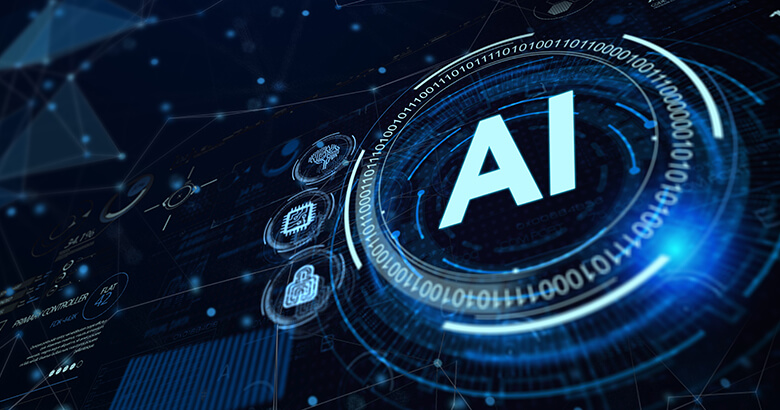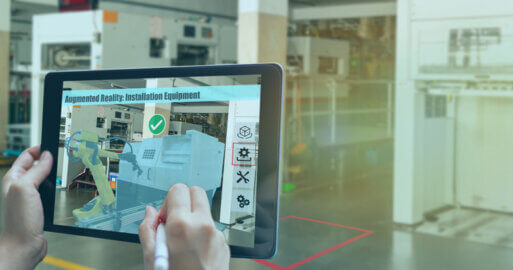Seamless Synergy: The Power of AI Integration Unleashed

There is a lot of hubbub about the impact of Artificial Intelligence (AI) and how AI integration can enhance business processes. Many people have been worried that AI may replace manpower, taking over several jobs. Yet, time and research have shown that new technologies have not only benefited humanity, they have also ushered in an unprecedented era of job creation. Historically, 2.61 new jobs have been created for every job that has been eliminated by technology. AI business integration has the potential to improve existing technologies, like Electronic Data Interchange (EDI), by reducing manual labor and costs so that IT staff can focus on core business initiatives and tasks that really matter. In this blog, we’ll explore how AI integration in business can enhance EDI technology for B2B processes.
What is Artificial Intelligence?
Before discovering and unleashing the power of AI integration, let’s have a look at what AI technology actually is in the first place. AI stands for “Artificial Intelligence,” which is the simulation of human intelligence in machines that are programmed to think and act like humans. The term can also be used for any machine that acts like a human mind, such as by learning and solving problems.
The best thing about AI is that it can think and act in ways that give it the best chance of reaching a certain goal. Machine learning (ML) is a subset of artificial intelligence, which refers to the concept that computer programs can automatically learn from new data and change without human assistance. Deep learning techniques let computers learn on their own by taking in a lot of unstructured data, like text, images and videos.
While AI has a role as a standalone technology, when businesses integrate AI and ML into a digital transformation strategy, they can streamline processes to increase efficiency and productivity and derive greater value from their data.
Integrate AI into business processes and systems
Integrating AI into business processes and systems can provide numerous benefits, including increased efficiency, better decision-making, enhanced customer experiences, and competitive advantage. Remember that AI integration is an ongoing process. It requires collaboration between business leaders, data scientists, engineers, and other stakeholders to ensure successful implementation and ongoing value creation.
Let’s look at a concrete example as the future of EDI and B2B meets AI. EDI refers to the electronic exchange of business documents between computer systems, such as invoices and purchase orders, offering a sustainable and future proof way for businesses to automate their communication and document exchange processes.
In first place, EDI and AI are unrelated. However, AI integration can help to automate EDI-based corporate processes. An EDI system, for example, may be used to automatically exchange invoices and purchase orders with a supplier, while an AI system can evaluate the data from those documents and provide recommendations for enhancing supply chain management.
Imagine this: A business receives a significant number of invoices from its vendors on a daily basis. In most cases, these invoices are delivered in the form of scanned documents or PDF files, and they have to be keyed in by hand into the accounting software used by the organization. This is a method that is labor-intensive and prone to errors.
The business could integrate an AI application with their EDI system to automate the data entry and speed up and simplify e-invoicing procedures. To begin, they have the option of utilizing optical character recognition, also known as OCR, in order to immediately extract the text from the bills. After that, they can make use of natural language processing (NLP) in order to recognize and extract important information from the invoices, such as the name of the supplier, the amount of the invoice, and the date of the invoice.
After the data has been collected and organized, it can be automatically entered into the company’s financial system through AI integration, removing the requirement for human intervention in the process of entering data. The company’s financial procedures can become more accurate and efficient as a result of this, in addition to saving time and reducing the risk of errors.
In addition, the business use an integration platform to enable AI to find patterns and trends in EDI data by using machine learning algorithms to conduct an analysis of the data. For instance, they can make use of clustering methods in order to group together invoices that are comparable to one another, or they can make use of predictive modeling in order to anticipate future expenditures. This can provide an organization with insightful information that will assist them in improving their business operations through AI integration initiatives.
These examples clearly demonstrate that AI integration in business drastically improves the EDI process in the following four areas:
- Identifying patterns and significant discrepancies: Integrated AI can detect significant variations in commercial papers. For example, if you make a quotation for your client that contains values that differ significantly from those used in previous quotes, an EDI tool with AI can assist you in identifying such deviations. Such minor but significant differences may be difficult to detect if documents are manually checked by humans.
- Validation: Integrating AI into business ensures that every invoice data is automatically validated by comparing it to other transaction-related documents for increased precision.
- Automation: AI can identify trends in data, such as those seen in invoices, purchase orders, and other documents. In the end, it makes automatic document entry and processing possible, which minimizes manual entry and risk of errors.
- The process of extracting information from documents: Integrated AI data models can be trained to automatically extract specific information from business papers. This data can then be transferred to other software applications to develop patterns and reports that businesses can use to make choices. This reduces the amount of time that would have been lost if the data had been manually extracted by humans.
In addition to being able to apply artificial intelligence to typical EDI exchanges, AI integration can also be beneficial when it comes to assuring a higher level of accuracy while converting non-EDI documents into a specific format. This is possible because AI can analyze the content of the documents it converts. In the near future, it will be interesting to witness how AI and ML enable integration platforms to seamlessly interact with a variety of contemporary technologies.
Discover the possibilities for enabling AI integration using the SEEBURGER BIS Platform
The SEEBURGER BIS Platform is a fully cloud-ready, centralized integration platform that offers flexible deployment-ready solutions for your unique ecosystem. Solve today’s integration challenges, and be prepared for tomorrow’s AI requirements, with the BIS Platform:
- Enable AI algorithms and programs with the BIS Platform to take advantage of machine learning capabilities.
- Reduce time, effort and reliance on IT staff with pre‑packaged industry content, templates, mappings and connectors.
- Start by implementing the BIS solutions that you need now, and then implement additional solutions and their components when your business needs them.
Minimize your total costs by digitalizing business processes through expert integration content and services from more than 35 years of experience.
Thank you for your message
We appreciate your interest in SEEBURGER
Get in contact with us:
Please enter details about your project in the message section so we can direct your inquiry to the right consultant.
Written by: Hitesh Baraiya
Hitesh Baraiya is a highly experienced Lead Solutions Architect at SEEBURGER since 2017, heading project delivery for cloud migration, digital transformation, iPaaS (Integration Platform as a service) and EDI/B2B/API legacy modernization projects with a demonstrated history of working in the information technology and services industry. For over 15 years, Hitesh has helped complex multi-national organizations across the globe to overcome their business integration challenges by designing and implementing business process solutions and integration platforms. With excellent customer relationship management skills and experience in managing stakeholders at all levels of business, Hitesh has helped businesses achieve their business objectives through technology-driven solution offerings that drive sustainable results.





